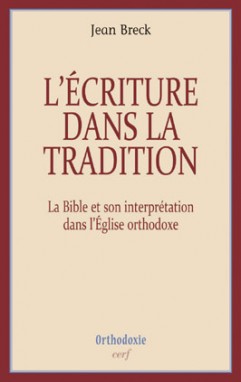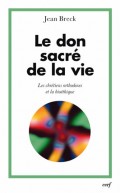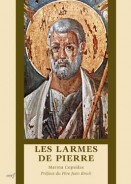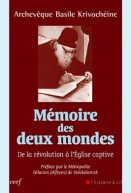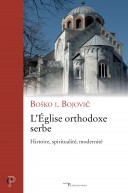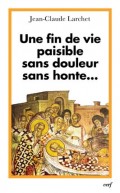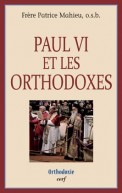L'Écriture dans la tradition
de Jean Breck
Collection Orthodoxie
304 pages - févr. 2013
30,80€
Les Pères orientaux de l’Église insistaient sur le fait que la Bible n’est pas « sui generis » mais qu’elle est née et a été mise en forme dans une communauté de foi. Ils ont compris l’Écriture comme un élément essentiel de la Sainte Tradition : le témoignage apostolique s’est transmis et développé dans les enseignements fondamentaux du christianisme orthodoxe. « L’Écriture dans la Tradition » offre un nouveau regard sur la manière dont les Pères orientaux ont utilisé l’Écriture dans l’élaboration de ce qui deviendra la doctrine orthodoxe de l’Église. Cela commence par une analyse sur les objectifs et les méthodes d’interprétation de la Bible tels qu’ils ont été développés en particulier par les Pères grecs. La deuxième partie introduit le lecteur à une forme littéraire ancienne connue sous le nom de « chiasme » et montre l’importance d’une lecture chiasmique du texte biblique pour en dévoiler son sens littéral. La dernière partie reprend plusieurs questions cruciales concernant les doctrines orthodoxes du Christ et du Saint Esprit. Soulevant, dans une nouvelle perspective, l’épineuse question du « filioque », ces derniers chapitres démontrent la pertinence du Credo de Nicée pour exprimer les enseignements de l’orthodoxie les plus fondamentaux et lourds de sens : Dieu en tant que Trinité et Dieu incarné. Ces doctrines reflètent clairement la façon dont l’Écriture prend forme dans la Tradition, tout en précisant les limites et le contenu de cette Tradition.
--
The Eastern Church Fathers insisted on the fact that the Bible is not ‘sui generis’ but was born out of, and shaped by, a religious community. They perceived the Scriptures as a basic element of the Holy Tradition, the apostolic witness being passed on and developed within the fundamental teachings of Orthodox Christianity. L’Écriture dans la Tradition offers a fresh perspective on the way the Eastern Fathers used the Scriptures to elaborate what would become the Church’s Orthodox doctrine. The book begins with an analysis of the objectives and methods of interpreting the Bible, in particular those developed by the Greek fathers. The second part introduces the reader to an ancient literary form known as ‘chiasmus’ and shows the importance of a chiastic reading of the biblical text in order to reveal its literal meaning. The final part re-examines several crucial questions concerning the orthodox doctrines about Christ and the Holy Spirit. Raising the thorny question of ‘filioque’ in this new perspective, the final chapters illustrate the pertinence of the Nicene Creed in expressing the most basic and meaningful Orthodox teachings: God as the Trinity and God Incarnate. These doctrines clearly reflect how the Scriptures take form within the tradition, while delineating the limits and content of this Tradition.
--
The Eastern Church Fathers insisted on the fact that the Bible is not ‘sui generis’ but was born out of, and shaped by, a religious community. They perceived the Scriptures as a basic element of the Holy Tradition, the apostolic witness being passed on and developed within the fundamental teachings of Orthodox Christianity. L’Écriture dans la Tradition offers a fresh perspective on the way the Eastern Fathers used the Scriptures to elaborate what would become the Church’s Orthodox doctrine. The book begins with an analysis of the objectives and methods of interpreting the Bible, in particular those developed by the Greek fathers. The second part introduces the reader to an ancient literary form known as ‘chiasmus’ and shows the importance of a chiastic reading of the biblical text in order to reveal its literal meaning. The final part re-examines several crucial questions concerning the orthodox doctrines about Christ and the Holy Spirit. Raising the thorny question of ‘filioque’ in this new perspective, the final chapters illustrate the pertinence of the Nicene Creed in expressing the most basic and meaningful Orthodox teachings: God as the Trinity and God Incarnate. These doctrines clearly reflect how the Scriptures take form within the tradition, while delineating the limits and content of this Tradition.
- Dimensions : 135x215x22
- ISBN : 9782204094092
- Poids : 390 grammes
Avec la collaboration de : André Chaveton, Sandrine Caneri
DU MÊME AUTEUR
> VOIR TOUS LES LIVRES DE l'AUTEUR
DANS LA CATÉGORIE INTRODUCTION AUX CHRISTIANISMES
Personne et nature
La Trinité — Le Christ — L'homme Contributions aux dialogues interorthodoxes et interchrétiens cont
de Jean-Claude Larchet
416 pages - déc. 2011

